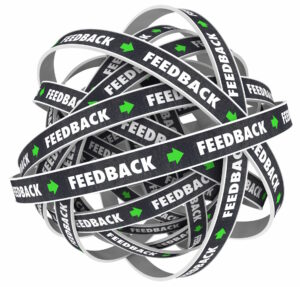A New Perspective on Business Strategy: The Systems Thinking Approach
AdamM Agile, Back to the Basics, Growth, Tools 0
If you’ve ever looked at your electric panel, you may have noticed a lot of circuit breakers. These little devices are in place to protect the system downstream from them. Each one may have several light switches, light fixtures, outlets, or appliances. In the panel, or nearby in some cases, these breakers are all protected by a master breaker.
 To use bigger appliances, larger breakers are needed, but they require thicker wire and more robust outlets. If you get too many big breakers in place, you need a larger big breaker. The main lines feeding the panel need to be large enough for the big breaker – the larger the breaker, the larger the lines. In this way, any change to the electrical system must be made with a mind for the rest of the electrical system lest you cause problems. This is an example of systems thinking.
To use bigger appliances, larger breakers are needed, but they require thicker wire and more robust outlets. If you get too many big breakers in place, you need a larger big breaker. The main lines feeding the panel need to be large enough for the big breaker – the larger the breaker, the larger the lines. In this way, any change to the electrical system must be made with a mind for the rest of the electrical system lest you cause problems. This is an example of systems thinking.
Systems thinking. It’s a term that many are familiar with, but most are not, even though they likely employ it in some capacity. As with many terms, the specifics of what it means and how it works are different for different people. From a broad perspective, systems thinking is characterized by observing and understanding complex entities and situations as whole units and interconnected relationships instead of breaking things down into component pieces. That doesn’t mean we aren’t going to acknowledge there are independent components or processes, but rather that we’ll focus on how they are related, connected, and dependent on each other. A primary result of this is we realize that changing any individual component changes the whole.
Understand the Business as a Whole
Any business solves problems for customers. This is true for physical widget building, running apps as a service, and even entertainment companies. This is done through a system of processes and tools. This series of processes and tools is the system of the business.
Seeing the business in this way allows you to make changes to pieces with a view of how they will affect the whole. At a glance, nothing but good can come from improving a process. Making the sales pipeline 50% more effective could result in more sales. However, the new influx of customers could overwhelm the support team or cause more errors in a production line.
By approaching the business as a system, we focus on improving processes and tools within the context of how they interact with each other. This results in improvements that don’t cause more problems than they solve.
Understand the Environment
Taking a step further back, the environment the business operates in can be viewed as a system. This could be a market or a physical location. It could be the collection of similar businesses looking to solve the same problem. There are multiple systems the business is part of.
Understanding the system that the business is part of is a vital part of strategic planning. Just as improper optimization can result in sub-optimal business operations, over-optimization of your business could result in more harm to the overall system than good. Perhaps you lower your defect rate to the point you stop getting customer feedback. The lack of feedback means you no longer get better at solving your customer’s problem, and over time, you get edged out of the market by competitors that respond to the customers’ needs.
Knowing the system your business operates in allows you to adapt to the system as it changes. This means your business maintains, and possibly increases, its relevance in the system.
Understand the Parts of the Business
Not only is the business a system but it is also made up of systems. Some of these are the processes and tools directly involved in delivering value to the customer. Others are supporting functions that are not part of that delivery. Often, HR and IT are examples of this; facilities or a cafeteria would be another.
Software development has the concept of the Application Programming Interface (API). This is essentially a black box in which you give an input and can expect a specific type of output. Thinking of our business as a system, we may have decided there is a set of interrelated black boxes. To improve on any of them, we need to go into the black box. Inside each one is another system, another collection of interrelated pieces dependent on each other to perform as a whole entity.
The downside here is some of these systems may be inaccessible, specifically any outsourced ones. A good example is in smaller, growing companies. Often, companies like this may outsource some business functions, especially ones that aren’t directly related to solving the customer’s problem. Suppose your accounting department is a separate company that you interact with on a quarterly basis. In that case, you may not believe you have much influence or insight into the systems that create that function. In reality, you might be able to sit down with the provider to gain insight and influence.
Taking a systems view is difficult, especially if we are part of the system. It’s best to start with a visualization exercise. Creating a map is an excellent first step. This can be a simple line of boxes listing the steps of a process or as complex as a mind map-style web of interconnected circles with steps, tools, sub-processes, and information. The exact format isn’t that important. It’s the process of visualization that allows us to start seeing patterns and connections we may have previously missed. This is where we begin to build our system view from which we can move forward.
Sometimes, the best way to shift to systems thinking is to bring an outside perspective in. We can help from mapping out a customer journey to finding interconnects between the different parts of the business. Contact us here to set up an initial consult call and see if working together is right for us.




